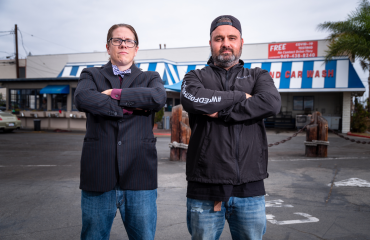Opinion | After Omicron, This Pandemic Will Be Different – The New York Times
Advertisement
Supported by
Guest Essay
Send any friend a story
As a subscriber, you have 10 gift articles to give each month. Anyone can read what you share.
By William Hanage
Dr. Hanage researches the evolution and epidemiology of infectious diseases at the Harvard T.H. Chan School of Public Health.
Omicron is really good at infecting people and doing it fast. So fast, in fact, that by the time you read this, chances are that cases have already reached a peak in your neighborhood.
While some countries are experiencing a rapid plunge in cases, it’s unclear how smooth the descent from the Omicron surge will be in others. Some places may continue to experience spikes in cases even after initial peaks or plateaus.
That said, Omicron’s extraordinary spread is likely to have important consequences for the future of the pandemic. By infecting large numbers of people quickly, it’s also generating immunity quickly. And that counts toward making Covid-19 a more manageable illness, since the layers of immunity may provide protection against future waves and variants. That will be scant comfort for people who suffer severe illness or worse this winter, but it does mean that after the Omicron wave, things will be different.
Omicron has spread at a record pace, and the consequences have been grave for an exhausted health care system. As older groups are infected, things may deteriorate further, but the situation is still vastly better than if people hadn’t already accumulated some immunity against Covid.
Data from scientists in Britain and South Africa suggest that the more experience people’s immune systems have in handling the coronavirus, the better protected they are.
Every exposure, whether to the virus or a vaccine, reduces the likelihood of severe illness on subsequent ones. That’s because each time our immune systems “see” the spike proteins on the outside of the coronavirus, which is the target for all the vaccines in use, they get better at responding to them. Infections get less severe, on average, over time not just because the virus is changing but also because our bodies are getting better at handling it.
There’s no guarantee that this pattern will continue. Immunity can wane, and the virus can evolve to sidestep protection. But all the evidence scientists have seen to date indicates that the protection against severe illness is holding up. If that continues, the next round with the virus (and there will be a next round) could be blunted, meaning the impact will be less significant for health care.
Some of this effect is already in play. You might have heard that Omicron is less severe than Delta. That looks to be correct, but once the role of immunity in preventing severe illness is accounted for, it is not that big a difference. The gap between cases and deaths during the Omicron surge in the United States and elsewhere is likely because of protection from prior immunity. People in South Africa, for example, likely experienced less severe illness from Omicron because so many had been infected with Delta.
Not everyone is equally protected. While immunity gained from prior infection is beneficial for preventing illness, it is not as beneficial as when combined with vaccination. For unvaccinated people with no immunity to the virus, Omicron can still cause severe disease. Too many people in the United States are unvaccinated. The number of Americans who have received booster shots is also far smaller than it should be, especially for older vulnerable people. This may be in part why the situation in the United States appears worse than in countries like Britain.
To get a sense of this, compare Britain’s recent mortality data to that of Massachusetts. The population of Britain is about 10 times that of the state. Britain is reporting an average of about 260 deaths a day from Covid-19 and going up. Massachusetts is reporting about 50 deaths a day, which means the state has about twice as many deaths per capita as Britain. Not coincidentally, people in Massachusetts are less likely to have received booster shots than people in Britain.
The immunity Omicron will leave behind might well be a major step toward making Covid a manageable illness by providing more protection against future surges and variants.
But the immunity generated by Omicron is not going to lead to the extinction of the virus. Pandemics do not end with the virus vanquished, a ticker-tape parade and a banner proclaiming “mission accomplished.” Instead of the virus going away, the nature of the disease it causes changes to a point that people consider it a tolerable risk, and people will disagree over what that means. Right now in many states, the number of hospitalizations has exceeded the peak of last winter, and there are about 2,000 deaths every day. Is that acceptable?
No one should confidently assert that Omicron signals the end of the pandemic, but we should be confident that future surges of infections, whether with Omicron or whatever variant comes next, will make fewer of us seriously ill than they would have before. That’s not to say that the rate of serious illness is the only measure that matters. There hasn’t been enough time to determine Omicron’s contribution to long Covid, for example. And the havoc that Omicron has sown is not trivial — we are seeing the effects in overwhelmed hospitals and closed schools.
Much better days may be ahead. But as the world has learned over the past two years, only fools with short memories make promises in a pandemic.
William Hanage is an epidemiologist at the Harvard T.H. Chan School of Public Health and a co-director of its Center for Communicable Disease Dynamics.
The Times is committed to publishing a diversity of letters to the editor. We’d like to hear what you think about this or any of our articles. Here are some tips. And here’s our email: letters@nytimes.com.
Follow The New York Times Opinion section on Facebook, Twitter (@NYTopinion) and Instagram.
Advertisement




